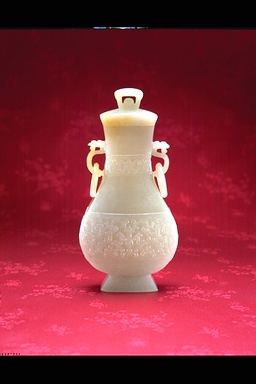
|

| vase
CD94-684
S89-1719 | |
| | Artifact Number | 80-441.1-3 | | | Current Cultural Affiliations | Chinese
| | | All Affiliations | Chinese
| | | Category | Category 02: Furnishings
| | | Sub-category | Household Accessories
| | | Place of Origin | Country - China
| | | Measurements | Height 14.5 cm, Length 7.0 cm, Width 4.5 cm | | | Earliest Possible Date | 1900/01/01 | | | Latest Possible Date | 1910/12/31 | | | Caption | Ping (Vase), early 1900s China
Chinese Vase (Ping)
| | Additional Information | In traditional China every individual, however rich or poor, was entitled to be honoured on three occasions: birth, death and marriage. Among Chinese-Canadians marriage is similarly honoured, but the circumstances and ceremonies surrounding it now blend Chinese tradition with Western symbolism. Matchmakers and fortune-tellers are no longer consulted; Canadian born Chinese choose their spouses themselves, though some continue to avoid marrying persons of the same surname. Weddings are now usually conducted in a church, followed by a reception at home and a banquet in a restaurant. Newlyweds maintain the tradition of offering tea to parents and relatives, but the old custom of kowtowing to elders and worshipping heaven and earth and the ancestors has waned. Some traditional wedding gifts are chop-sticks, dates and lotus seeds, all symbolizing the wish that the couple have many children. Another ideal gift would be a jade vase, whose name ping is a homophone for peace and stability. The vase pictured here has handles shaped like ling zhi, a fungus that is the emblem of immortality.
The handles of the vase are shaped like the Chinese alphabet character for immortality. In Chinese, this type of vase is called ping, which sounds identical to the word meaning peace and stability. It is a popular wedding present.
|
|